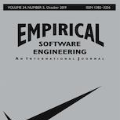Reconfigurable intelligent surface (RIS) is a promising candidate technology of the upcoming Sixth Generation (6G) communication system for its ability to provide unprecedented spectral and energy efficiency increment through passive beamforming. However, it is challenging to obtain instantaneous channel state information (I-CSI) for RIS, which obliges us to use statistical channel state information (S-CSI) to achieve passive beamforming. In this paper, RIS-aided multiple-input single-output (MISO) multi-user downlink communication system with correlated channels is investigated. Then, we formulate the problem of joint beamforming design at the AP and RIS to maximize the sum ergodic spectral efficiency (ESE) of all users to improve the network capacity. Since it is too hard to compute sum ESE, an ESE approximation is adopted to reformulate the problem into a more tractable form. Then, we present two joint beamforming algorithms, namely the singular value decomposition-gradient descent (SVD-GD) algorithm and the fractional programming-gradient descent (FP-GD) algorithm. Simulation results show the effectiveness of our proposed algorithms and validate that 2-bits quantizer is enough for RIS phase shifts implementation.
翻译:暂无翻译




